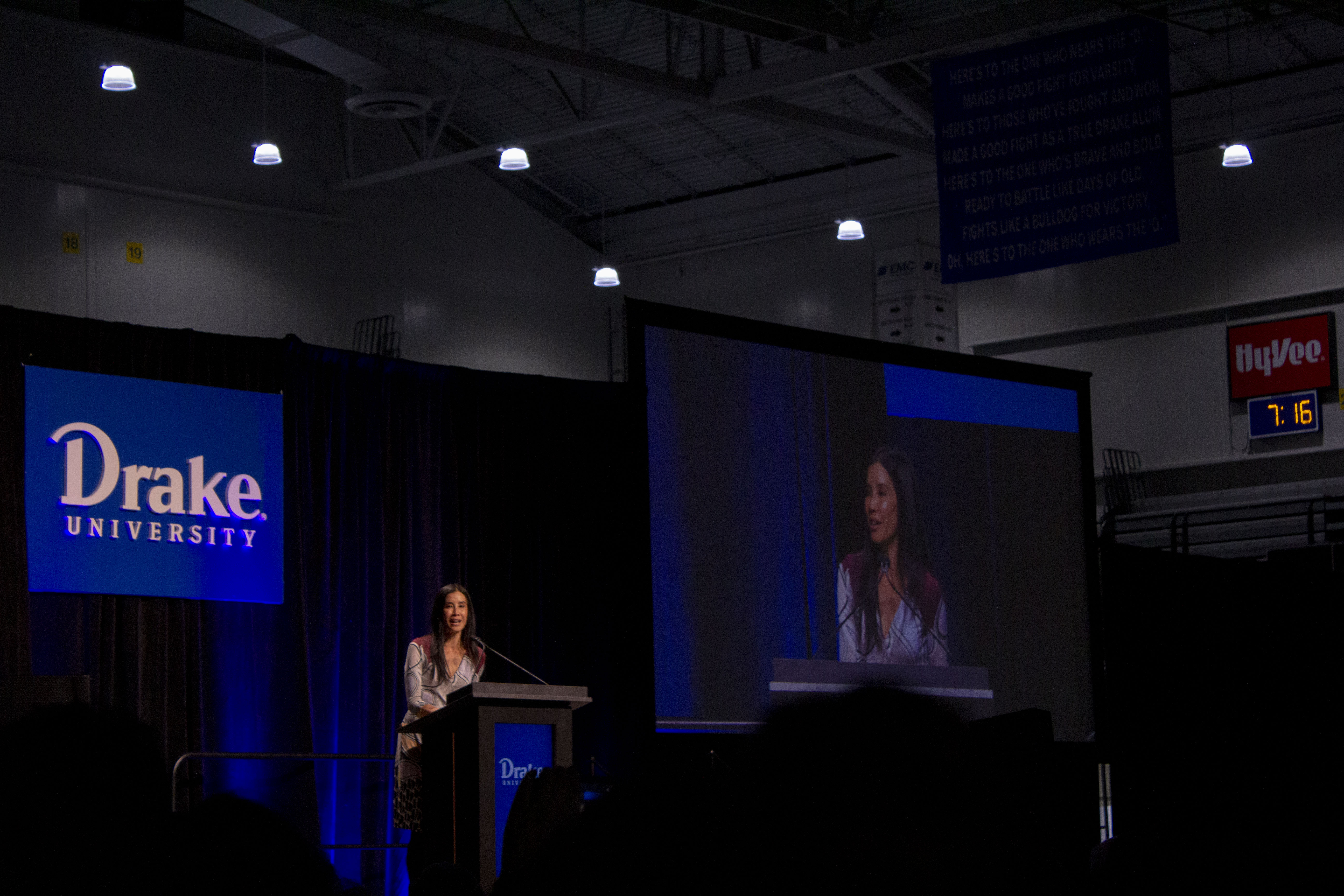Male-female ratio myth examined
For some, the ratio of females to males on Drake’s campus may seem like a blessing. For others, it may be a hindrance. Girls, forget about transferring because it won’t do you any good. It turns out the first-year class does not have a ratio of seven women to three men. In fact, it is equal to the national average. More women are attending college than men.
“It has to do with birthrates,” said Tom Delahunt, vice president of admissions at Drake. “There are more women than men.”
According to the United Nations Statistics Division, for 2011, the United States is 51 percent women and 49 percent men.
There is also an inclination that more women are pursing higher education than men.
“There is a trend of more women graduating high school and applying to college,” Delahunt said.
However, Delahunt stresses that Drake does not look at gender when choosing students to be accepted into the university.
“Simply, there were more women who qualified this year than men,” said Delahunt.
This year’s first-year class is 57 percent female and 43 percent male — equal to the national average, according to a New York Times article titled “New Math on Campus.” According to the article, researchers site several reasons for this. According to the article, more men are dropping out and women tend to have higher grades, which causes the gender gap.
Delahunt believes if this statistic was more exaggerated, it could create a different culture on campus. However, he doesn’t think this is the case right now.
Rachel Boon, director of institutional research and academic compliance at Drake, believes this is not a sign of a long time trend.
“The percentage of women in college has been fluctuating the last four to five years,” Boon said. “The percentage is not that big of a change from last year.”
For total undergrad students at Drake, the ratio in 2010 was 56 percent women and 44 percent men. There is only a one percent increase in women from last year.
First-year Alexandra Caulkins says her high school consisted of more females than males, so the ratio seems normal to her.
“To me, it doesn’t really matter,” said Caulkins. “Even if it was flipped, it (Drake) wouldn’t be different.”
When considering whether certain programs will attract more women or men, Caulkins believes Drake has many diverse co-ed programs.
Senior Maggie Sutton says she rarely notices the gender discrepancy at Drake and doesn’t perceive that the ratio has changed since her first year here. While she hardly notices the ratio in classes, she says it can be noticeable socially.
“When one group of men is absent socially, such as a fraternity, it makes the gender gap noticeable,” Sutton said. “However, if a group of women is absent socially, it’s not noticeable.”
First-year Josh Schoenblatt believes the gender disparity at Drake is favorable, and not for the obvious reason.
“Men can be overpowering and girls bring kindness to the school,” said Schoenblatt.
Schoenblatt also believes there are creative programs and clubs at Drake that wouldn’t exist if the gender ratio was switched, such as the ballroom dancing club.
Gender stratification by school at Drake
Arts & Sciences: 41% male, 59% female
CPBA: 39% male, 61% female
Education: 20% male, 80% female
JMC: 26% male, 74% female
Pharmacy: 31% male, 69% female





There’s something wrong with the stats. Even if you take a weighted average of the male/female ratio in the different schools at Drake, male population won’t be higher than 41%… but Drake is still about 44% male?
Yea these stats are way wrong. It’s impossible for the female population to be 57% if the lowest percentage is 59% in individual schools. Might want to check that out…..